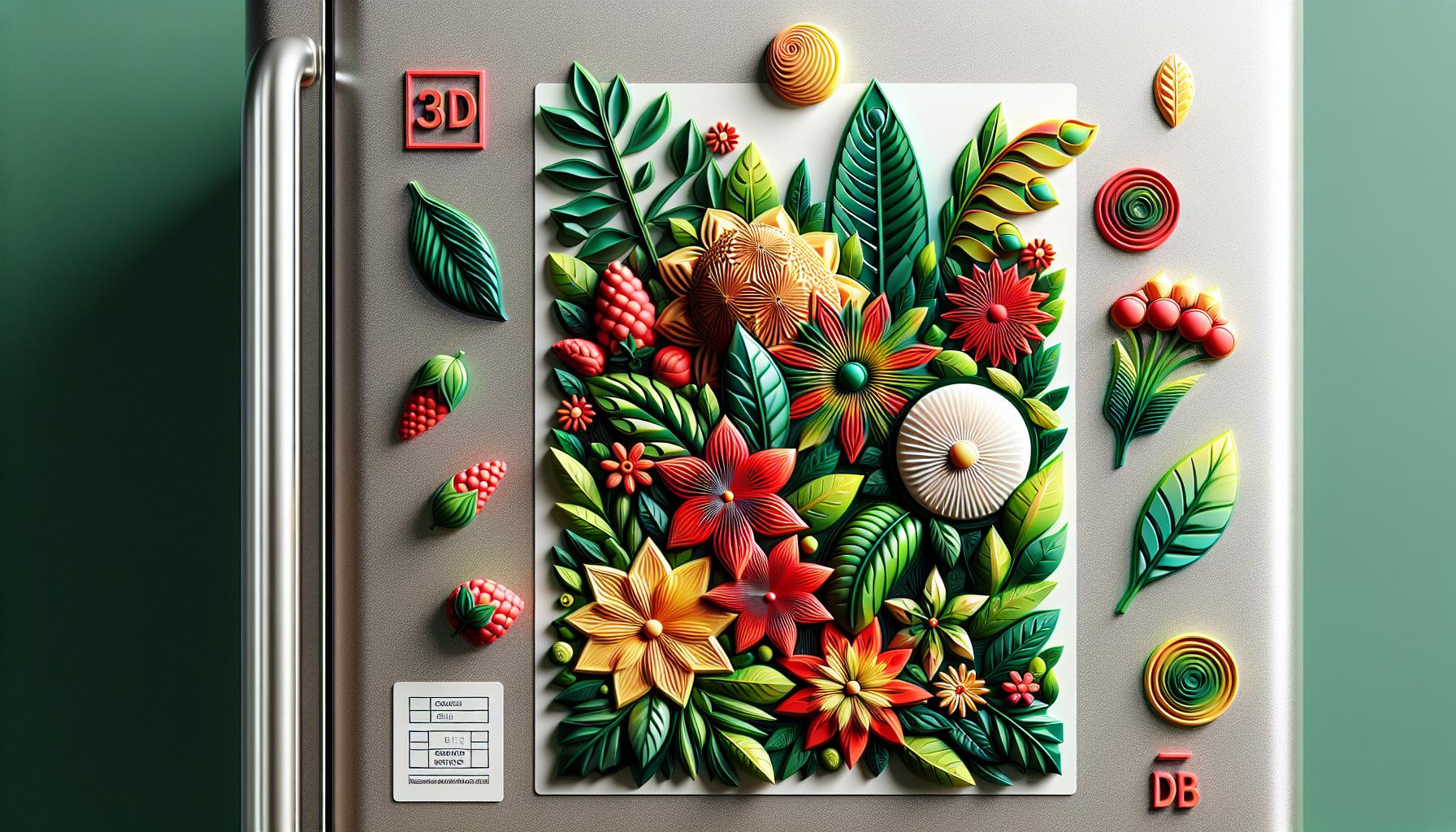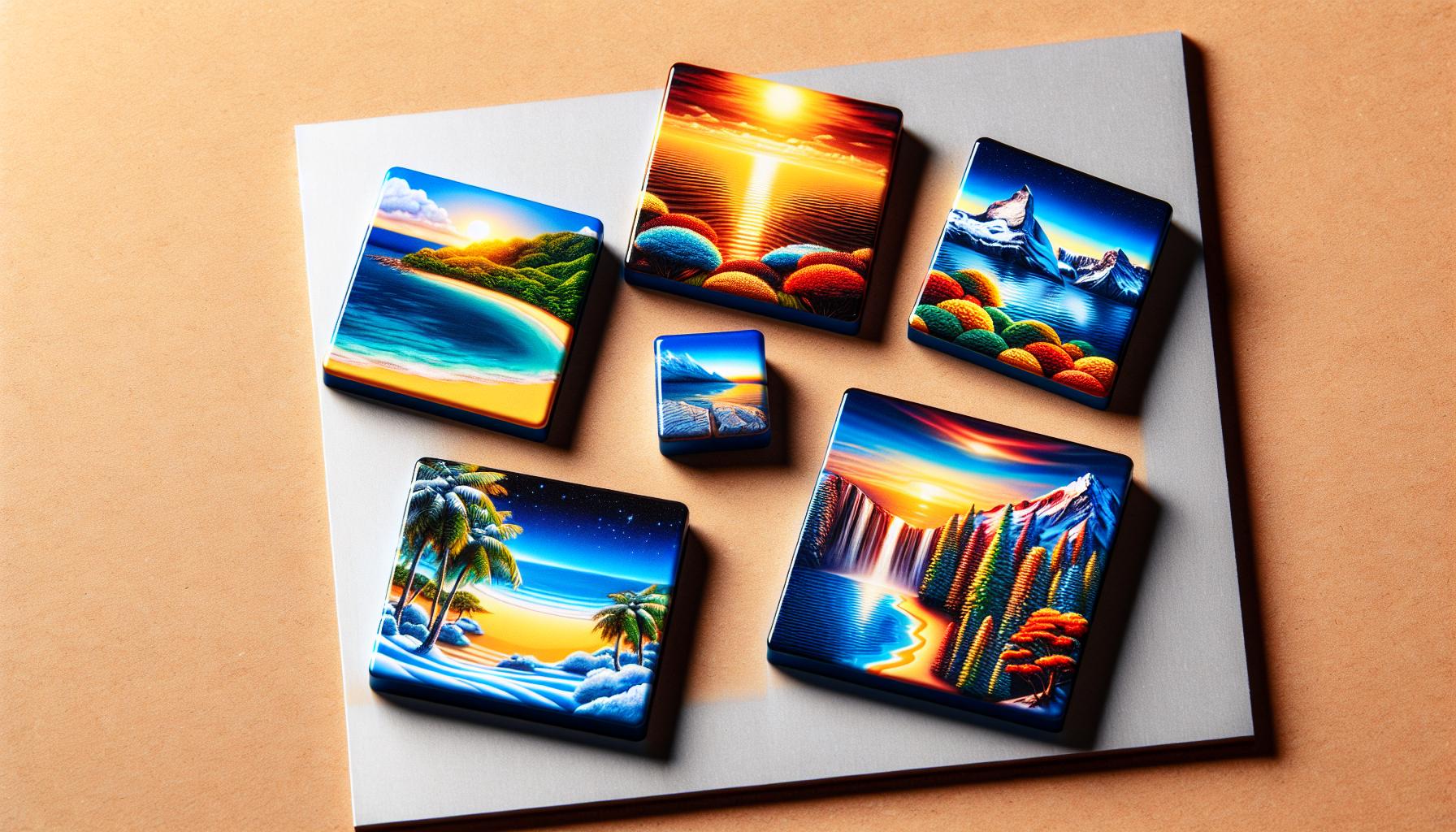TABLE OF CONTENTS
- 3D Printed Magnets That Stand Out
- Why Lenticular Magnets Are Eye-Catching and Unique
- Design Tips for Creating Stunning 3D Printed Magnets
- Conclusion: Elevate Your Branding with 3D Lenticular Magnets
- Frequently Asked Questions
- Home
- content hub
- Wonderful 3D Lenticular Magnets to Attract
Wonderful 3D Lenticular Magnets to Attract
Emma Davis
Content Writer
Dec 4, 20203368 views
Dec 4, 20203368 views

TABLE OF CONTENTS
- 3D Printed Magnets That Stand Out
- Why Lenticular Magnets Are Eye-Catching and Unique
- Design Tips for Creating Stunning 3D Printed Magnets
- Conclusion: Elevate Your Branding with 3D Lenticular Magnets
- Frequently Asked Questions
Imagine a world where magnets aren't just stuck on your fridge but are intricately woven into the very fabric of our daily gadgets and tools. With the rise of 3D printing technology, this isn't just a futuristic dream—it's becoming a reality. Our journey into the realm of 3D printed magnets uncovers a fascinating intersection of innovation and practicality, where the potential applications are as varied as they are groundbreaking.
As we delve into this topic, we'll explore how 3D printing, particularly through FDM technology, is revolutionizing the way we think about magnets. From enhancing the efficiency of material use to creating complex magnetoactive objects, the possibilities are endless. This article will guide you through the exciting advancements, challenges, and opportunities that lie in the world of 3D printed magnets, offering insights into how this technology can reshape industries and everyday life.
3D Printed Magnets That Stand Out
The evolution of 3D printed magnets introduces remarkable opportunities in various sectors, allowing for the customization and enhancement of magnetic properties. Utilizing FDM technology, these magnets embody precision and functionality.
Integration with Innovative Designs
One way 3D printed magnets distinguish themselves is through their integration into innovative designs. By embedding magnets directly into complex structures, we can create products with unique features. For instance, the integration of magnetic properties during the printing process enhances the design and allows for permanent magnetic orientations without post-magnetization.

Recycling Efforts in Magnet Production
Recycling plays a crucial role in the sustainability of 3D printed magnets. Advancements allow us to recycle ferrite residues from magnetic material production. Using recycled materials, we contribute to environmental sustainability while still producing high-quality magnets.
Customization with Neodymium Magnets
Neodymium magnets add another dimension to 3D printed products. We can customize these powerful magnets in various shapes and sizes, such as 5x10 mm round neodymium magnets, to suit different applications. Their increased strength and durability make them a popular choice for embedding in models that require significant magnetic force (Design Templates for Magnets).
Enhanced Applications of 3D Magnets
3D printed magnets open a world of possibilities. From simple household solutions to complex industrial applications, these magnets are increasingly used in fields like electronics and automotive industries. With the best Online Designer Tools, businesses can create custom solutions that elevate their brand presence through innovative designs.
The combination of customization, sustainability, and utility makes 3D printed magnets truly stand out, offering new avenues for creating functional and visually appealing products. Whether it's through lenticular printing techniques or 3D Lenticular Magnets, the emphasis is on maximizing design potential while ensuring effective magnetic performance in every application.
Why Lenticular Magnets Are Eye-Catching and Unique

Lenticular magnets are captivating due to their dynamic visual effects, leveraging advancements in 3D printing technologies to stand out. The technology allows for stunning designs that can transform flat imagery into vibrant, multidimensional experiences. By integrating these effects, lenticular magnets create an engaging visual appeal that captures attention immediately.
Visual Effects
Lenticular magnets employ specialized lenticular printing techniques that enable images to change or animate when viewed from different angles. This striking feature is crucial for marketing strategies that require eye-catching visuals to grab consumer attention.
Customization Potential
With 3D printing, there's incredible flexibility in creating custom lenticular magnets of various shapes and sizes. This customization ensures that each magnet fits a brand’s unique identity, amplifying its marketing message through tailored design elements.
Complex Geometries
3D printing also supports the creation of complex geometries, pushing boundaries that traditional manufacturing can't match. Such innovation allows us to produce intricate, high-quality magnets that are not only functional but also aesthetically advanced, elevating brand presence.
Magnetoactive Properties
Advancements in integrating magnetoactive properties without post-magnetization turn lenticular magnets into interactive objects. This development enhances their functionality, making them not just visually appealing but also versatile in application.
These features solidify lenticular magnets as exceptional marketing tools, and at 4OVER4.COM, our expertise in custom printing solutions ensures businesses can harness these benefits to elevate their brand presence effectively.
Design Tips for Creating Stunning 3D Printed Magnets

Accurate measurement is crucial for embedding magnets in 3D printed designs. We should start by precisely measuring magnet dimensions using calipers. This ensures they fit well within our 3D model's cavities.
Creating a tolerance test is essential. By printing multiple holes at slight size variations, like 0.1 mm increments, we can determine the best fit for our magnets.
Negative space design in CAD software is fundamental. We should create negative spaces slightly larger than our magnets by adding roughly 0.015 inches to their dimensions for a loose fit. Ensuring adequate depth in these spaces maintains magnetic strength without compromising design by being too deep. Typically, leaving about 0.2 inches is effective.
Utilizing a stack of magnets increases both magnetic strength and engagement. By stacking magnets two or three high, such as with neodymium magnets, we enhance our design's magnetic performance. This helps especially if the magnets are too close and risk attracting or repelling out of place.
Embedding magnets offers numerous advantages over adhesive-mounted ones. Adhesive solutions often fail under temperature extremes or chemical exposure. Designing cavities allows magnets to integrate seamlessly into our models, enhancing durability and appearance.
Access to CAD software combined with FDM 3D printers can significantly elevate our 3D printing projects. With tools like lenticular printing, we can achieve dynamic effects in designs, offering visually captivating results.
4OVER4.COM proves valuable in elevating brand presence through custom printing solutions. By leveraging customizable 3D lenticular magnets, businesses can produce unique and compelling designs that resonate with their audience.
In ensuring magnets are correctly embedded, the expertise of 4OVER4.COM plays a key role, offering resources and guidance that facilitate innovative design execution. We can tap into a wide range of options and effectively integrate 3D printed magnets into our projects, enhancing both function and brand impact.
Conclusion: Elevate Your Branding with 3D Lenticular Magnets
3D printed magnets, especially the innovative lenticular types, offer remarkable opportunities for customization and brand elevation. By leveraging advanced 3D printing technologies, we can create magnets that not only capture attention but also deliver dynamic visual effects that enhance marketing strategies. The ability to recycle materials and create complex designs without post-magnetization underscores their sustainability and efficiency. As we explore the potential of these magnets across various industries, it's clear they hold transformative power in both functionality and aesthetics. Embracing this technology allows us to push the boundaries of design and sustainability, making a significant impact in our branding efforts.
Frequently Asked Questions
What are 3D printed magnets?
3D printed magnets are magnets created using 3D printing technologies, such as Fused Deposition Modeling (FDM). They allow for customized shapes and sizes, enabling innovative designs and enhanced magnetic properties without the need for post-magnetization.
What are the applications of 3D printed magnets?
3D printed magnets are used across various sectors, including electronics and automotive industries. Their customizable nature allows businesses to create unique solutions that enhance product functionality and brand presence through advanced, tailored designs.
Can 3D printed magnets be recycled?
Yes, advancements in magnet production have enabled the recycling of ferrite residues used in 3D printed magnets. This contributes to environmental sustainability while maintaining high-quality output, making 3D printed magnets an eco-friendly option.
What are lenticular magnets?
Lenticular magnets utilize specialized 3D printing techniques to create dynamic visual effects. These effects change or animate with different viewing angles, making these magnets effective marketing tools for brands looking to capture audience attention.
How do you ensure that 3D printed magnets work efficiently?
To ensure efficiency, accurate measurements and tolerance tests are crucial. Use CAD software to create negative spaces in designs for embedding magnets properly. Techniques like stacking magnets and embedding them are suggested for enhanced performance and durability.
What role does 4OVER4.COM play in 3D printed magnets?
4OVER4.COM provides resources for businesses and individuals to create custom 3D lenticular magnets. They offer expertise and tools needed for high-quality, customized magnet designs, helping to elevate brand presence through innovative solutions.
More from Cool Interesting
5424967
Have you ever seen business flyers without images or a proper la
Emma Davis
Jun 25, 2020
5324143
Are you aware that
Emma Davis
Jun 17, 2020
3504747
So, you've decided to take the leap and print flyers
Emma Davis
Jun 4, 2020
5274649
Can you ever think of a product without branding? Branding gives a polished appearance to your products and draws the attention of the custome
Emma Davis
May 28, 2020
3904384
One of the most perfect ways to showcase your company brand is by use of custom hang tags. These serve as a brilliant opportunity to have cust
Emma Davis
May 28, 2020
3453603
Have you ever received a postcard? If you have, you must know how warmth-inducing and thought-provoking they are. Now how would you feel if yo
Emma Davis
May 14, 2020
6063692
If you have been in any business; big or small, you know that it takes a lot of small efforts to make a big milestone. You also understand how
Emma Davis
May 14, 2020
4284828
From cheap stickers to custom vinyl stickers, this print marketing tool is slowly and steadily weaving its way into the commercial culture. Yo
Emma Davis
May 13, 2020







